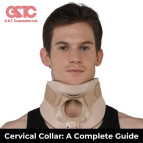Speech-language
disorders and impediments can have a profound impact on an individual's ability
to communicate effectively. These disorders can affect children and adults
alike, and can range from mild to severe. In this essay, we will explore the 10
most common speech-language disorders and impediments, as outlined by the
American Speech-Language-Hearing Association (ASHA), and discuss their
characteristics, causes, and treatments.
- Articulation Disorders: Articulation disorders refer to
difficulties in making sounds or producing specific sounds accurately.
Commonly, children with this disorder struggle with pronouncing sounds
like "s," "r," or "th." The disorder can
stem from developmental delays, hearing loss, or physical anomalies.
Treatment primarily involves speech therapy that may include exercises to
aid the child in learning how to produce sounds correctly. - Phonological Disorders: Phonological disorders pertain to
difficulties with a language's sound system. Children with the disorder
may experience symptoms including difficulty comprehending sound rules,
leading to sound substitutions or omissions. Possible causes may include
developmental delays or hearing loss. Treatment typically involves speech
therapy, including exercises to improve sound accuracy and use in speech. - Fluency Disorders: Fluency
disorders refer to difficulties with the cadence or pace of speech. The
most prevalent fluency disorder is stuttering, in which an individual repeats
or extends sounds, syllables, or words. It can result from genetic
factors, developmental delays, or environmental factors. Treatment
typically includes speech therapy, which may incorporate methods to help
the person regulate their stuttering and enhance their fluency while
speaking. - Language Delay: Language delay
pertains to challenges with acquiring language skills, such as
comprehending and utilizing spoken and written language. Symptoms of the
disorder include difficulties in following directions, understanding
questions, or expressing oneself clearly. The condition may be caused by
genetic factors, hearing loss, or environmental factors. Speech therapy,
which incorporates exercises to help the child learn and practice language
skills, is the usual form of treatment for language delay. - Language Disorders: Language
disorders refer to issues with both utilizing and comprehending language.
Children with the disorder may experience difficulties with grammar,
vocabulary, or comprehending intricate sentences. Possible causes may
involve genetic factors, brain injury, or developmental delays. Treatment
for language disorders typically includes speech therapy, which
incorporates exercises to help the individual enhance their language
skills and utilize them efficiently. - Hearing Impairment: Hearing
impairment involves a loss of hearing, which can range from mild to
profound. Individuals with hearing impairment may have difficulty hearing
sounds or understanding speech. Hearing impairment can be caused by
genetic factors, exposure to loud noise, or ear infections. Treatment for
hearing impairment may involve hearing aids, cochlear implants, or other
assistive devices. - Voice Disorders: Voice
disorders involve difficulties with the production of sound by the vocal
cords. Individuals with voice disorders may have hoarseness, breathiness,
or a strained voice. Voice disorders can be caused by overuse of the vocal
cords, acid reflux, or physical abnormalities. Treatment for voice
disorders typically involves speech therapy, which may include exercises
to help the individual use their voice effectively and reduce strain on
the vocal cords.
8. Apraxia
of Speech: Apraxia of speech is a motor disorder that affects speech
coordination. Symptoms include difficulty with articulation, timing, and
prosody, resulting in slow and effortful speech that may be difficult to
understand. Possible causes can involve neurological conditions or brain
damage. Treatment for apraxia of speech often entails speech therapy, which may
incorporate exercises to improve speech production and coordination, and using
communication aids and devices to facilitate communication.
9. Aphasia:
Aphasia involves difficulties with language caused by brain damage, such as
stroke or traumatic brain injury. Individuals with aphasia may have difficulty
speaking, understanding, reading, or writing language. Treatment for aphasia
typically involves speech therapy, which may include exercises to help the
individual improve their language skills and use compensatory strategies.
- Pragmatic Language Disorders:
Pragmatic language disorders refer to challenges with the social use of
language. Symptoms include difficulty with turn-taking, staying on topic,
and interpreting nonverbal cues, resulting in improper use of language for
social communication. Possible causes can involve developmental delays,
autism spectrum disorder, or social communication disorder. Treatment for
pragmatic language disorders often involves speech therapy, which may
include exercises to improve social communication skills.
In conclusion, speech-language
disorders and impediments can have a significant impact on an individual's
ability to communicate effectively. Early intervention with speech therapy can
often improve outcomes and help individuals overcome their challenges. It is
important to seek professional help from a licensed speech-language pathologist
if you or a loved one are experiencing speech or language difficulties. By
understanding the characteristics, causes, and treatments of the 10 most common
speech-language disorders and impediments, we can work towards improving
communication and quality of life for those affected by these conditions.
_thumb.png)
_thumb.png)



